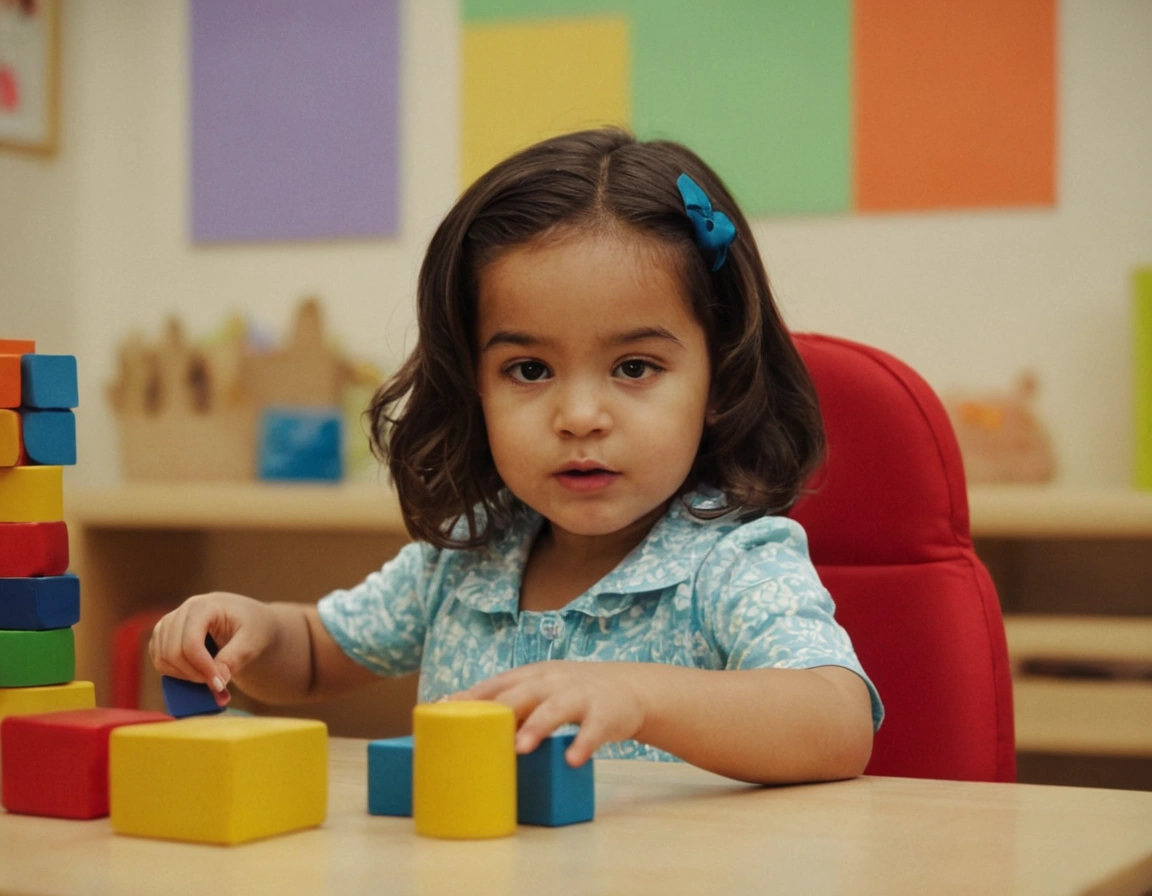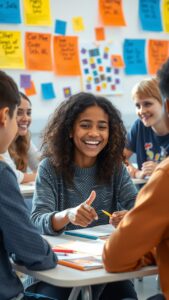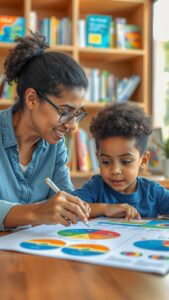Welcome! Whether you’re a parent, educator, or caregiver, early childhood education plays an essential role in shaping a child’s development. These formative years set the foundation for future learning, social skills, and overall well-being. As you embark on this journey, it’s natural to have questions about the best approaches for nurturing young minds.
This article will guide you through the top practices in early childhood education, explaining what works best based on research and real-life success stories. From creating supportive learning environments to balancing structured learning with play, we’ll explore key methods that make a difference in early education. By implementing these strategies, you can provide young children with a positive and enriching start to their educational journey.
1. Understanding the Importance of Early Childhood Education
- Keyword Focus: Early childhood education importance, child development benefits
Early childhood is a critical period for learning and growth. Research shows that early educational experiences positively impact cognitive, emotional, and social development. Early childhood education introduces children to the basics of communication, critical thinking, and emotional regulation. By understanding why this stage matters, parents and teachers can take proactive steps to support children’s development.
Key Insight: Quality early education can improve academic outcomes, social skills, and even long-term health, highlighting the importance of investing in young learners.
2. Creating a Supportive Learning Environment
- Keyword Focus: Supportive learning environment, safe learning space, nurturing classroom
A supportive learning environment encourages curiosity and fosters a child’s sense of security. Young children need spaces where they feel safe to explore, ask questions, and make mistakes. Parents and teachers can create these environments by offering positive reinforcement, creating predictable routines, and setting up organized, child-friendly spaces.
Solution: Use child-sized furniture, arrange materials within easy reach, and allow children choices to foster independence.
3. Balancing Play with Structured Learning
- Keyword Focus: Play-based learning, structured learning in early education, balance of play and academics
Play is not only fun for young children—it’s essential for learning. Play-based learning encourages creativity, problem-solving, and social interaction. While structured learning is important, especially for building early literacy and numeracy skills, a balance between guided activities and free play helps maintain engagement and builds foundational life skills.
Solution: Include a mix of guided activities (like storytime) and free play in daily routines. This combination allows children to develop both academic and interpersonal skills.
4. Fostering Language and Literacy Skills
- Keyword Focus: Early literacy, language development, reading to children
Language development is one of the most important aspects of early childhood education. Regularly reading, talking, and singing to children builds vocabulary, enhances listening skills, and lays the groundwork for reading and writing. Parents and educators can incorporate storytelling, group reading, and interactive language games into daily routines.
Tip: Start with simple, repetitive books, encourage children to retell stories, and ask questions to foster comprehension.
5. Encouraging Social and Emotional Learning
- Keyword Focus: Social-emotional learning in early childhood, SEL activities, teaching empathy
Social and emotional learning (SEL) enables children to manage emotions, form healthy relationships, and develop empathy. SEL activities include sharing, recognizing feelings, and learning conflict resolution. Teaching children to label emotions and express themselves reduces behavior issues and prepares them for school and life.
Tip: Use picture books and role-play activities to help children recognize and discuss different emotions.
6. Introducing STEM Concepts Early
- Keyword Focus: Early childhood STEM education, introducing math and science, STEM activities for preschoolers
STEM (Science, Technology, Engineering, and Math) isn’t just for older students; young children benefit from early exposure too. Simple STEM activities, like building with blocks or observing plants, introduce kids to problem-solving, counting, and basic science concepts in an accessible way.
Activity: Organize a “nature walk” where children can count leaves, observe insects, or talk about the weather—encouraging curiosity about the natural world.
7. Emphasizing Physical Activity
- Keyword Focus: Physical activity in early childhood, movement in learning, motor skills development
Physical activity is crucial for developing motor skills, coordination, and overall health. Young children should have opportunities for both structured and unstructured physical activities, including dancing, outdoor play, and exercises that strengthen fine and gross motor skills.
Solution: Set up a mix of indoor and outdoor activities that promote movement, like obstacle courses, climbing, and ball games.
8. Integrating Art and Creativity
- Keyword Focus: Creative development, art activities in early education, benefits of creativity in childhood
Creativity encourages self-expression and innovation. Art activities like drawing, painting, and craft-making allow children to express themselves and build fine motor skills. By integrating art and creativity into the curriculum, parents and educators help children explore their interests and develop confidence in their abilities.
Tip: Provide a variety of materials (crayons, clay, fabric) to encourage experimentation and creativity without strict guidelines.
9. Promoting Independence and Self-Help Skills
- Keyword Focus: Teaching independence to children, self-help skills for preschoolers, autonomy in early childhood
Teaching self-help skills, like dressing, tidying up, and making simple choices, builds a child’s confidence and independence. When children are encouraged to manage basic tasks, they feel more capable and responsible, which are essential skills for future learning.
Strategy: Use daily routines as learning opportunities—let children help set the table, clean up toys, or choose their outfits.
10. Building Strong Parent-Teacher Partnerships
- Keyword Focus: Parent involvement in early education, parent-teacher collaboration, communication in early education
Collaboration between parents and educators creates a strong support system for children. Open communication, regular updates, and active involvement in school activities allow parents to stay informed about their child’s progress and reinforce learning at home.
Solution: Set up regular meetings or send home a weekly progress note to keep parents informed and engaged in their child’s education.
Best Practices and Implementation Tips in Early Childhood Education
| Practice | Description | Implementation Tips |
|---|---|---|
| Supportive Learning Environment | Create a secure and encouraging space | Use child-friendly furniture, reinforce positive behavior |
| Play and Structured Learning | Balance guided activities with free play | Alternate between play and focused activities to build diverse skills |
| Language and Literacy Development | Foster early reading and communication skills | Read daily, use storytelling, ask questions |
| Social and Emotional Learning | Teach empathy, emotion regulation, and interpersonal skills | Use role-play, picture books, and discussions about feelings |
| STEM Introduction | Introduce basic science, counting, and problem-solving skills | Use nature walks, building blocks, and simple counting games |
| Physical Activity | Encourage motor skill development through movement | Provide opportunities for dance, climbing, and active play |
| Creative Arts | Promote self-expression through art activities | Offer diverse materials, encourage open-ended projects |
| Independence and Self-Help Skills | Teach children basic life skills and personal responsibility | Integrate choices and self-care into daily routines |
| Parent-Teacher Partnership | Build a strong, supportive connection between home and school | Regular updates, involve parents in activities |
Each of these practices serves as a building block in nurturing well-rounded, curious, and capable young learners. By embracing these principles, parents and educators can help children achieve their potential in both academic and social realms, setting the stage for lifelong learning and resilience.




